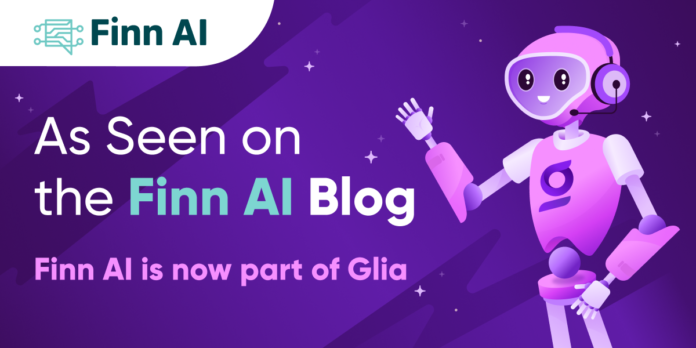This post originally appeared on the Finn AI blog, which is now part of Glia.
The 2020 Covid-19 pandemic taught the financial industry how important digital customer engagement was–especially since customers had no other choice! Even now that physical locations are opening up again, institutions are still looking for ways to maintain and increase adoption of their digital banking assets as a way to remain central to their client’s financial activity. Users were already migrating towards primarily using digital platforms, with the events of 2020 only further expediting the transition.
For many users, the menu-driven mobile app or website experience is too impersonal and hard to navigate. Infrequently used features such as change address, transfer funds, or report lost cards are often difficult to find. If users can’t easily get the results they want with your digital tools, they will stop using them entirely, and may seek out other institutions with more intuitive self-service options. Financial Institutions must make sure that their digital offerings will be intuitive and easy to use in order to maintain retention in their online spaces.
Following the lead of big banks like Bank of America, many smaller institutions are using AI-powered chatbots to fill in the experience gaps and make customers successful on mobile and online banking. Bank of America’s chatbot “Erica” has been highly successful, guiding over 17 million clients around the app and helping them find what they need. The bot acts as a concierge, letting users ask questions and be taken to the right information directly, or even complete their transaction within the chatbot entirely.
While Bank of America and other industry giants have massive budgets and resources to create these chatbots, the same option exists for smaller institutions as well. Prebuilt managed service solutions, like [Glia Virtual Assistants], offer the same capabilities to much smaller banks who cannot create their own chatbot experience. They have everything needed to implement a full conversational AI chatbot ready to go, which can be plugged into your digital services in a matter of weeks.
Conversational AI chatbots utilize four distinct techniques in order to create strong digital retention through customer service:
- Keep it Friendly: Using natural and personalized language, a chatbot is a more easygoing way to engage with online banking when compared to navigating menus.
- Keep it Direct: Users can ask a chatbot a question and get instant answers, without needing to spend time hunting for the right information. The less time spent with customer service, the more satisfied the user will be.
- Keep it Familiar: An increasing number of people are using live chat to engage their bank rather than phone calls or in-person visits to branches. Text-based chat is the preferred method of communication for Millennials and Gen Z, and a chatbot is the easiest way to engage them in this fashion.
- Keep it Fast: Eliminating wait time is always enticing, so a chatbot is an ideal way to improve digital customer experience. Chatbots can solve a query 5x faster on average when compared to a human agent, saving time for your users and keeping them satisfied.
Making the user experience memorable and satisfying to use is crucial to increasing adoption of your digital channels. Chatbots are becoming the glue that creates the sticky digital experience you need to keep customers using your institution’s digital assets. While using digital channels is no longer a necessity, many customers and members are now very comfortable banking through their smartphones and aren’t in any hurry to return to physical branch locations. Having sophisticated digital tools available for them to use is becoming a necessity for maintaining loyalty and retention for your institution.




